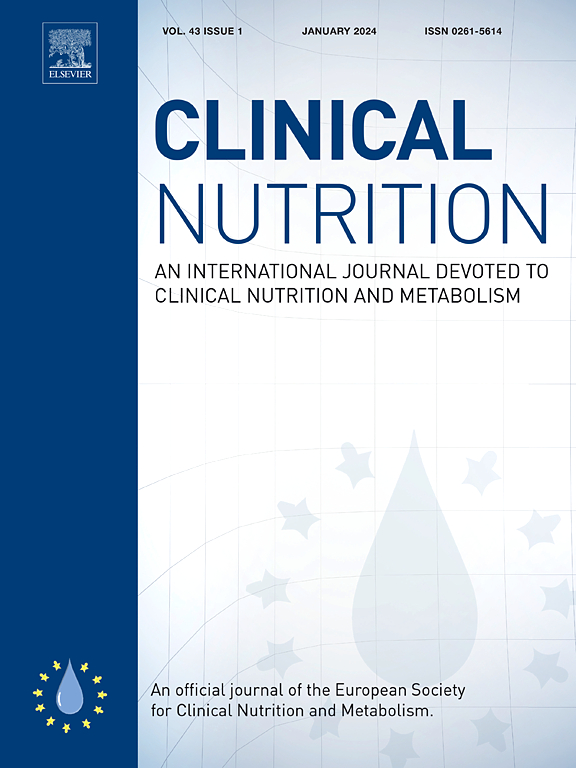Circulating polyunsaturated fatty acids percentages and coronary artery disease incidence and mortality: Observational and Mendelian randomization analyses
IF 6.6
2区 医学
Q1 NUTRITION & DIETETICS
引用次数: 0
Abstract
Background
The roles of polyunsaturated fatty acids (PUFAs) in preventing coronary artery disease (CAD) remain controversial. This study aimed to investigate the relationships between circulating PUFA percentages and CAD outcomes using observational and Mendelian randomization (MR) approaches.
Methods
We analyzed data from 203,373 UK Biobank participants without CAD at baseline. Four PUFA percentages (docosahexaenoic acid [DHA]%, omega-3%, linoleic acid [LA]%, and omega-6%) were examined in relation to incident CAD and CAD mortality. MR analyses included one-sample linear and nonlinear approaches, as well as two-sample univariable and multivariable methods. Observational and one-sample MR analyses were conducted overall and stratified by age and sex.
Results
During a median follow-up of 13.2 years, 16,098 incident CAD cases and 1243 CAD deaths occurred. Observationally, all PUFA percentages were inversely associated with both CAD outcomes. In one-sample MR, genetically predicted DHA% was strongly associated with decreased risk of CAD mortality (hazard ratio [HR] 0.31, 95 % confidence interval [CI] 0.15–0.62, P = 9.71 × 10−4), with a pronounced effect in individuals aged ≥58 years (HR 0.20, 95 % CI 0.09–0.43, P = 4.75 × 10−5). Genetically predicted omega-6% was associated with a decreased risk of incident CAD (HR 0.84, 95 % CI 0.76–0.92, P = 1.26 × 10−4), with a significant effect in females but not in males. Two-sample MR confirmed these findings, suggesting partial mediation through lipid pathways. Nonlinear MR analyses validated these linear associations without threshold effects.
Conclusions
Observational and genetically predicted high DHA% protects against CAD mortality, particularly in older adults. Omega-6% and incident CAD exhibited sex-specific inverse associations. These findings underscore the importance of considering age and sex in PUFA-based strategies for CAD prevention.
求助全文
约1分钟内获得全文
求助全文
来源期刊

Clinical nutrition
医学-营养学
CiteScore
14.10
自引率
6.30%
发文量
356
审稿时长
28 days
期刊介绍:
Clinical Nutrition, the official journal of ESPEN, The European Society for Clinical Nutrition and Metabolism, is an international journal providing essential scientific information on nutritional and metabolic care and the relationship between nutrition and disease both in the setting of basic science and clinical practice. Published bi-monthly, each issue combines original articles and reviews providing an invaluable reference for any specialist concerned with these fields.
 求助内容:
求助内容: 应助结果提醒方式:
应助结果提醒方式:


